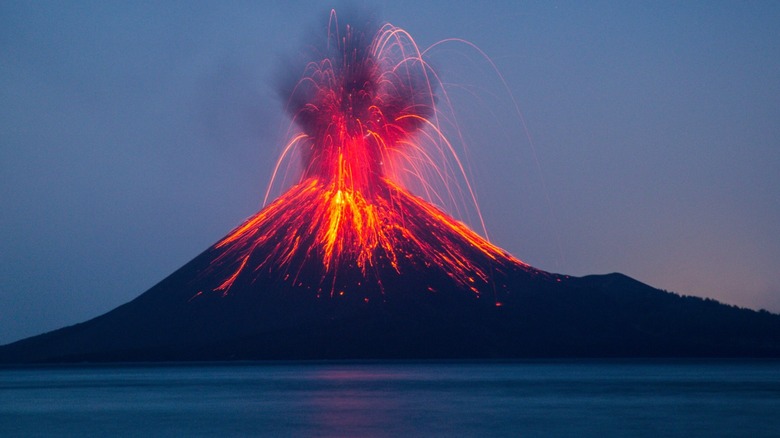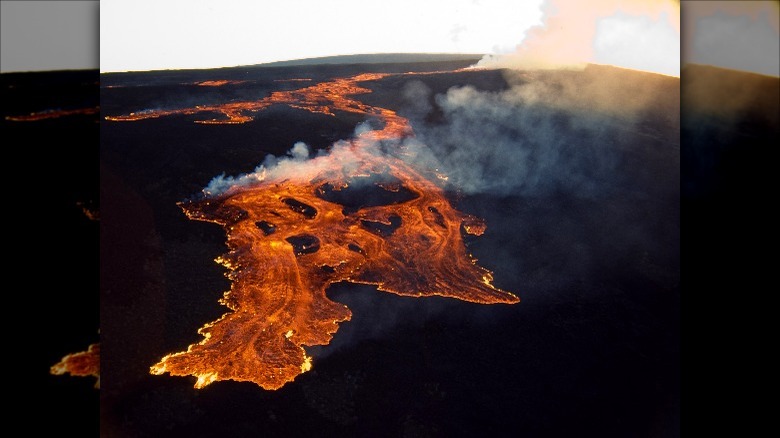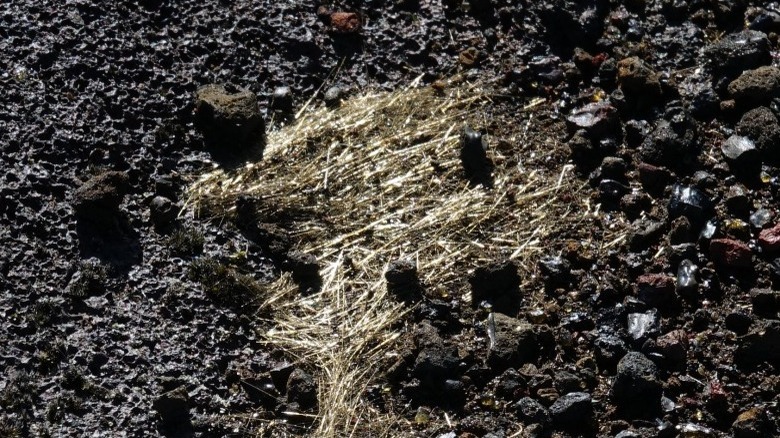What Is Pele's Hair And Why Are Officials Worried About It After The Eruption Of Mauna Loa?
One of the most spectacular natural phenomena one can witness here on Earth is a volcanic eruption. According to National Geographic, a volcano is "an opening in a planet or moon's crust, through which molten rock, gas and other materials erupt." Volcanoes can vary in size and be found all over the world. There are three classifications for volcanic activity: active, dormant, and extinct.
The United States Geological Survey states that there are around 1,350 potentially-active volcanoes on our planet. Many of the world's most active volcanoes can be found in an area around the Pacific Ocean commonly referred to as the Ring of Fire. The islands of Hawaii are a part of this volcanically-active area and are home to the world's largest active volcano, known as Mauna Loa. On November 27, 2022, Mauna Loa began to erupt for the first time in decades (per The Sacramento Bee). Official warnings of potentially harmful aftereffects of the eruption were issued soon after, and they included noxious gasses, ash in the air, and something referred to as Pele's Hair.
Mauna Loa's eruption history
The Hawaiian islands are considered by many to be a tropical paradise. With stunning mountains, beautiful beaches, and a lush climate, there is a reason why it is one of the most popular tourist destinations in the world. However, the islands didn't just pop up out of the Pacific Ocean out of nowhere. According to National Ocean Service, Hawaii was formed by volcanic activity, specifically a hot spot in the middle of the Pacific Plate, and is made up of around 132 different islands.
Located on the Big Island is the volcano known as Mauna Loa. It is the world's largest active volcano, standing at 13,667 ft., and possesses a dome that is 75 miles long and 64 miles wide (per USGS). Mauna Loa has reportedly erupted at least 12 times since 1843. During the earlier part of the 20th century, the U.S. military took action to divert lava flows from a major city on the island. There were also well-documented and significant eruptions that happened in 1975 and 1984.
What is Pele's Hair?
Whenever a volcanic eruption happens, the immediate thought of many people is the lava flow. Molten rock can be a threat to homes and property as well as both animal and human life. Though lava can be the most obvious potential threat to a community's safety, there are others that accompany magma flows. A volcanic eruption not only spews lava, but it also expels ash, gas, and other substances into the air as well. One phenomenon that is common in Hawaii is known as Pele's Hair.
Pele's Hair is the name given to extremely delicate glass fibers that can form after a volcanic eruption (per the National Park Service). Named for Pele, the Hawaiian goddess of fire and volcanoes, they have the appearance of animal or even human hair, and they're often gold in color. These fibers form as a result of volcanic gasses stretching the molten lava into long, thin strands, giving it a hair-like presentation. As they are light and fragile, they can be carried by the wind and deposited in various places. Despite their delicate appearance, Pele's Hair can be very sharp as technically they are made of glass. As such, they can cause damage to eyes and skin, so it is important to tread with caution around them.


